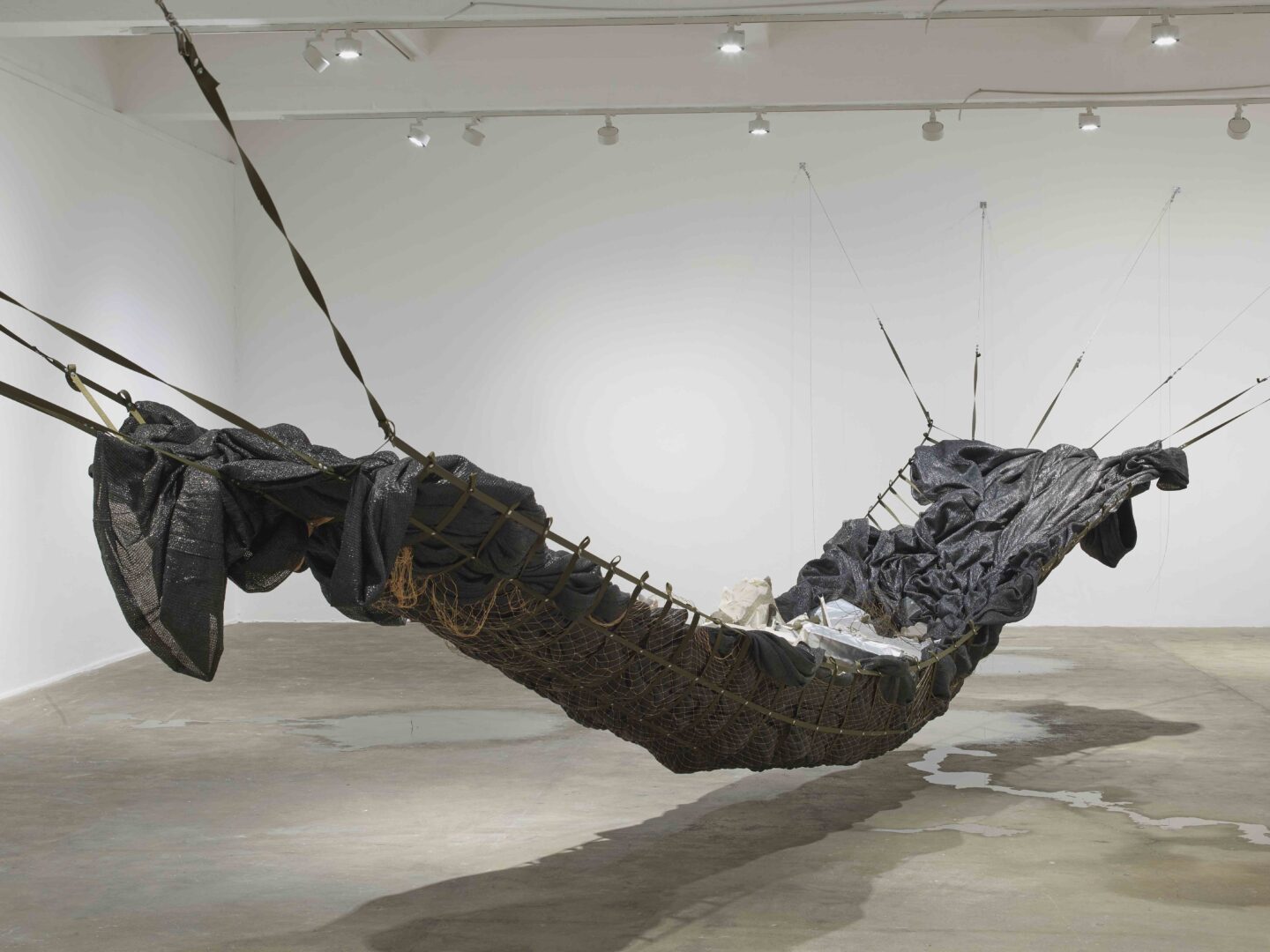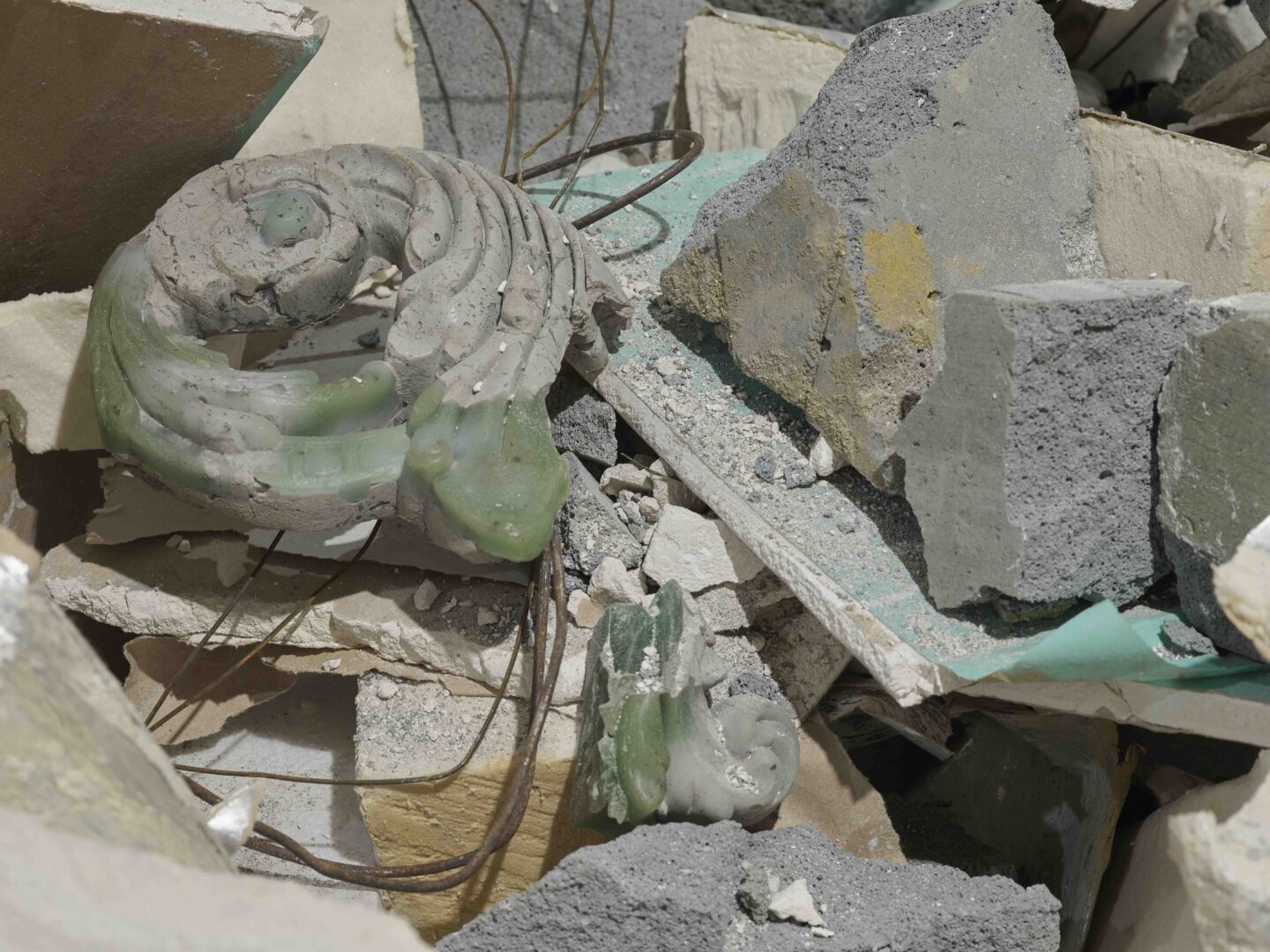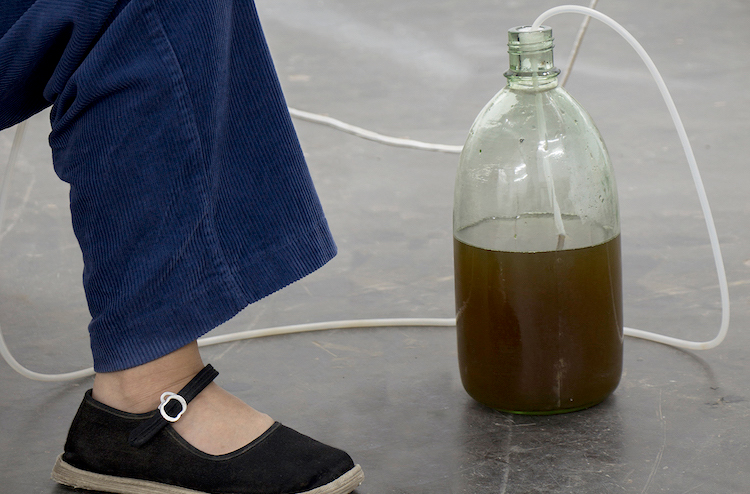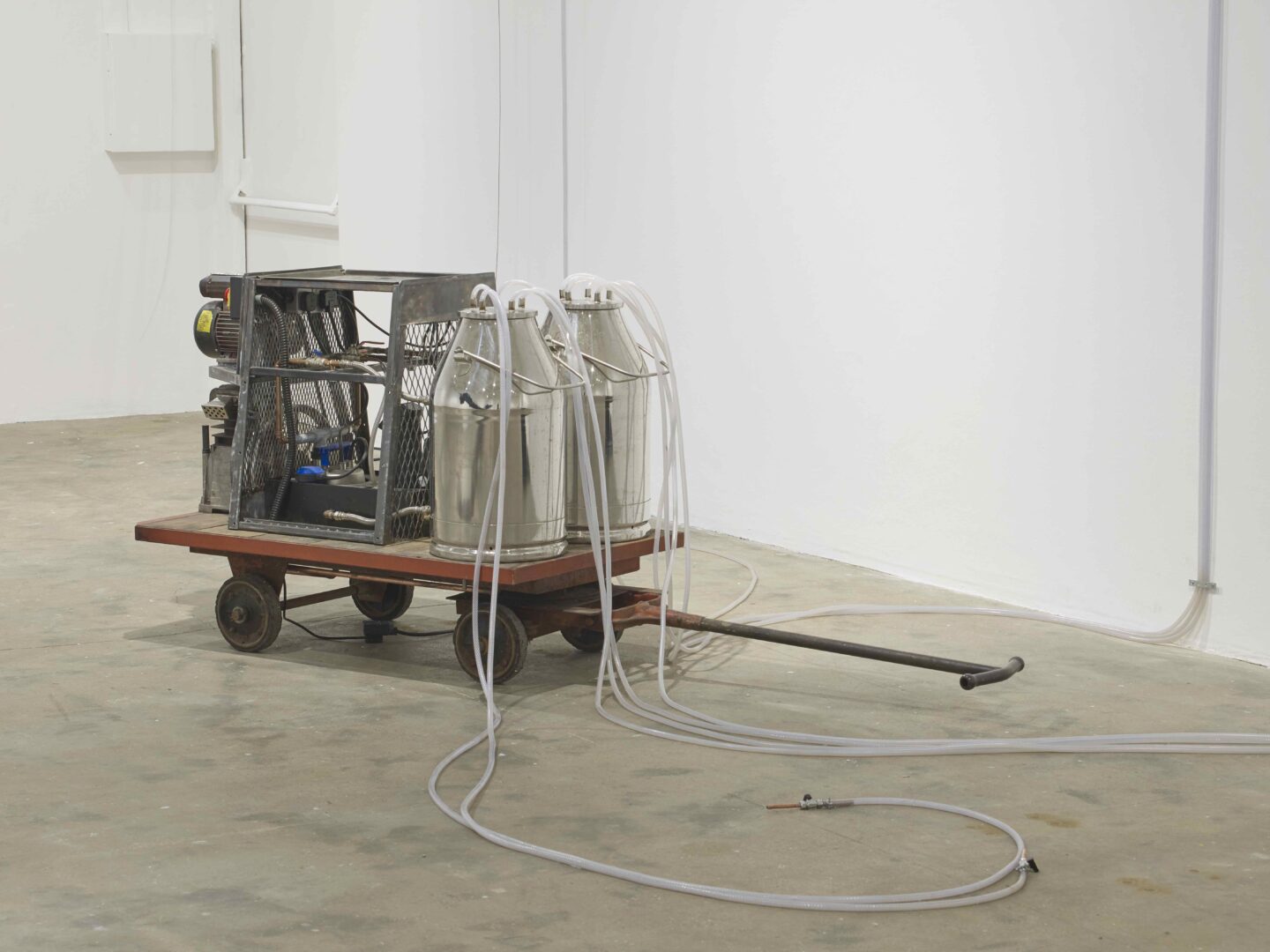At the center of Chisenhale’s main gallery, a black net is suspended, hanging between multiple points on the ceiling. Resembling a post-nuclear hammock, the net carries rubble collected at Tower Hamlets (the city council district where Chisenhale is located), as well as Yu Ji’s Shanghai studio. Beside the net, a machine pumps water from two milk churns. Tubes wired around the ceiling carry this water across the room and slowly leak it unto designated spots. In another corner, molded sculptures depicting feminine bodies are displayed on tabletops.
 Jaded Ribs (2019-21). Commissioned and produced by Chisenhale Gallery, London. Courtesy of the artist. Photo: Andy Keate
Jaded Ribs (2019-21). Commissioned and produced by Chisenhale Gallery, London. Courtesy of the artist. Photo: Andy Keate
To perform close readings of Yu Ji’s works in “Mud Water” is a difficult task, as they do not revolve around a simple narrative. They do not make an explicit political statement, nor do they concern themselves with art historical references. Rather, they produce a series of entanglements amongst various materials—organic and non-organic, human and non-human. The success in Yu Ji’s installations is their ability to form an eco-system within the bounds of a gallery space. This eco-system is a reflection of urban life under consumption and ecological crises, but also holds kinship and inter-dependency.
 Jaded Ribs (2019-21). Commissioned and produced by Chisenhale Gallery, London. Courtesy of the artist. Photo: Andy Keate
Jaded Ribs (2019-21). Commissioned and produced by Chisenhale Gallery, London. Courtesy of the artist. Photo: Andy Keate
In an interview with Chisenhale’s curator Ellen Greig, Yu Ji explains that she produced this commission over three years, which she considers to be exceptionally long for her artistic practice. Participating in Delfina Foundation’s residency program in London, the artist found the time to roam the canals and rivers of the city along with her newborn child. Throughout the interview, she stresses how fortunate she was to take this time before producing the exhibition, and how central these observations were in the formation of the works.
These comments provide a striking parallel to Jamila Prowse’s thoughtful piece about slowness and art-making. Prowse’s essay references scholar Tina Campt and centers on the work of Black artists and their means by which to counter their expendability. This dedication to “honoring slowness” as attentiveness and a method of resistance to mass production within capitalism is palpable in “Mud Water”.
 Wasted Mud (Production Image) (2020). Image courtesy the artist.
Wasted Mud (Production Image) (2020). Image courtesy the artist.
The slowness of Yu Ji’s installations works as an antithesis to 20th century depictions of urban life. In contrast to city symphonies’ majestic depiction of high-rises and new machinery, Yu Ji displays discarded objects and debris. Instead of emphasizing order and repetition, the artist embraces liquidity and discord. Hers is a portrait of a city under intense observation rather than a quick snapshot.
 Foraged (2019-2021). Commissioned and produced by Chisenhale Gallery, London. Courtesy of the artist. Photo: Andy Keate
Foraged (2019-2021). Commissioned and produced by Chisenhale Gallery, London. Courtesy of the artist. Photo: Andy Keate
The same standard of observation is required of the viewer to make sense of the exhibition. They need to follow the path of tubes to see where the water is leaking, decipher the mechanics of the pump to understand what it is producing, attend to the softness of the sculptures to extract any meaning. Most importantly, their presence in the exhibition forms its own kind of entanglement with the surrounding materials, and they must fathom their role in it. This is a risky ask, but it is certainly refreshing at a time when most artworks comfort their viewers rather than challenging them.
YU JI
Wasted Mud
Chisenhale Gallery
22 May 2021 – 18 July 2021


 Jaded Ribs (2019-21). Commissioned and produced by Chisenhale Gallery, London. Courtesy of the artist. Photo: Andy Keate
Jaded Ribs (2019-21). Commissioned and produced by Chisenhale Gallery, London. Courtesy of the artist. Photo: Andy Keate Jaded Ribs (2019-21). Commissioned and produced by Chisenhale Gallery, London. Courtesy of the artist. Photo: Andy Keate
Jaded Ribs (2019-21). Commissioned and produced by Chisenhale Gallery, London. Courtesy of the artist. Photo: Andy Keate Wasted Mud (Production Image) (2020). Image courtesy the artist.
Wasted Mud (Production Image) (2020). Image courtesy the artist. Foraged (2019-2021). Commissioned and produced by Chisenhale Gallery, London. Courtesy of the artist. Photo: Andy Keate
Foraged (2019-2021). Commissioned and produced by Chisenhale Gallery, London. Courtesy of the artist. Photo: Andy Keate